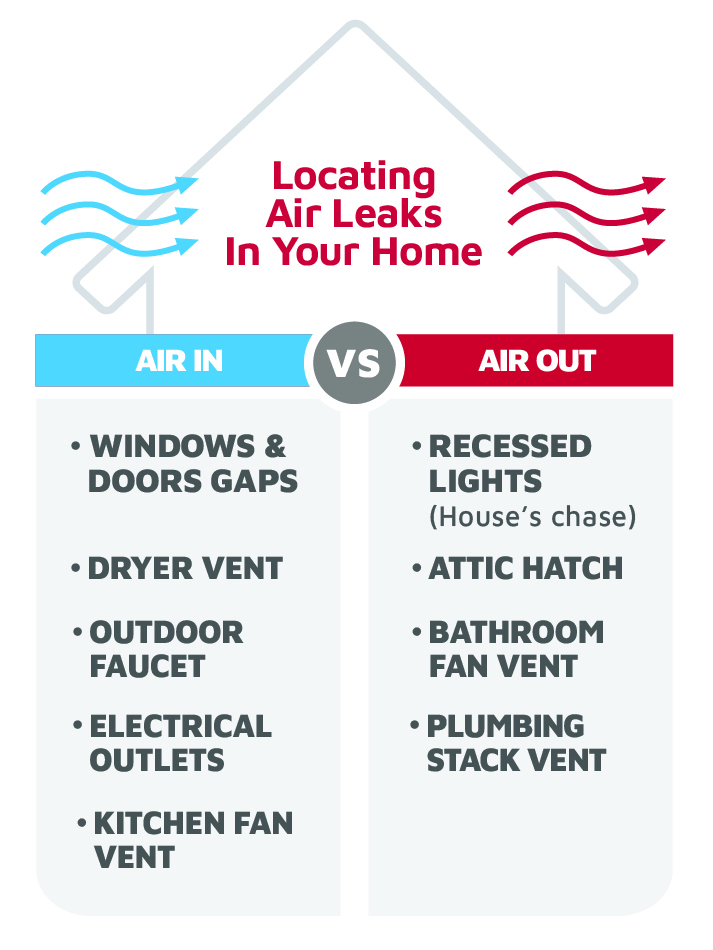As energy costs rise, more homeowners are turning to home energy audits to understand how their homes use, and lose, energy. A home energy audit is a smart first step toward improving efficiency, lowering utility bills, and creating a more comfortable, sustainable living space.
What Is a Home Energy Audit?
A home energy audit is a detailed assessment of how energy flows through your home. Its purpose is to identify areas where energy is being wasted and provide practical recommendations for improvement.
During an audit, a professional energy auditor evaluates everything from insulation and air leaks to heating, cooling, and appliance performance. The goal is to pinpoint inefficiencies that drive up utility bills and reduce comfort, then offer a roadmap for upgrades that will make your home perform better.
Auditors use specialized tools like infrared cameras to detect heat loss and perform diagnostics such as blower door tests to measure air leakage. These tests reveal hidden issues, such as poorly sealed windows, gaps around doors, or insufficient insulation, that may not be visible to the naked eye but significantly impact your home’s energy use.
Signs Your Home Could Benefit from an Energy Audit
You don’t have to wait for your energy bills to skyrocket to schedule an audit. Some common indicators that your home may need one include:
- High or inconsistent energy bills compared to similar homes in your area.
- Uneven temperatures from room to room, suggesting air leaks or poor insulation.
- Drafts or cold spots, especially near windows, doors, or baseboards.
- Frequent HVAC issues or systems running constantly to maintain comfort.
If any of these issues sound familiar, a home energy audit can help uncover the root cause and point you toward effective, lasting solutions.
What Happens During a Professional Home Energy Audit?
A professional home energy audit typically follows a step-by-step process that provides a complete picture of your home’s energy performance:
Initial Consultation – The auditor begins with a walkthrough and discussion about your comfort concerns, energy bills, and goals.
Exterior Evaluation – They inspect the outside of your home, checking for gaps, cracks, or poorly sealed windows and doors.
Interior Inspection – Inside, the auditor examines insulation in walls and attics, tests ductwork for leaks, and assesses the performance of your HVAC system.
Diagnostic Testing – Using tools like blower door testing and thermal imaging, the auditor identifies hidden air leaks, temperature differences, and inefficiencies.
Review and Recommendations – Once testing is complete, you’ll receive a detailed report outlining problem areas, suggested upgrades, and estimated energy savings.
Most home energy audits take about two to four hours, depending on the home’s size and complexity.
Benefits of Getting a Home Energy Audit
A home energy audit offers valuable insights that can help you make informed decisions about energy efficiency improvements. Key benefits include:

- Lower Energy Bills – By sealing leaks, improving insulation, and upgrading inefficient systems, many homeowners save up to 30% on energy costs, according to the U.S. Department of Energy.
- Greater Comfort – Eliminating drafts and hot or cold spots creates a more stable indoor environment throughout every season.
- Improved Indoor Air Quality – Sealing leaks and maintaining HVAC efficiency can help reduce dust, allergens, and outdoor pollutants entering your home.
- Environmental Impact – Reducing energy waste lowers your household’s carbon footprint and contributes to a more sustainable future.
- Roadmap for Upgrades – The audit provides prioritized recommendations like upgrading to energy-efficient appliances, helping you decide where to invest for the greatest return.
How to Prepare for Your Home Energy Audit?
A little preparation can make your audit smoother and more productive:
- Gather utility bills from the past 12 months so the auditor can identify usage trends.
- List comfort issues, such as drafty areas or uneven temperatures.
- Provide information about your home’s construction, insulation, and HVAC equipment.
- Ensure access to attics, basements, and crawl spaces where energy losses often occur. While it’s not necessary for the homeowner to be present during the audit, the auditor will need access to these spaces.
Choosing a qualified professional is also essential. Look for auditors certified by the Building Performance Institute (BPI) or the Residential Energy Services Network (RESNET). These professionals follow industry standards and use specialized equipment to provide accurate, reliable results.
After the Audit: Taking the Next Steps
Once you receive your audit report, you’ll have a clear roadmap of where to start. Common recommendations may include:
- Adding or upgrading insulation in attics and walls.
- Sealing air leaks around windows, doors, and ducts.
- Installing Smart Thermostats or energy-efficient HVAC systems.
- Replacing older appliances with ENERGY STAR® certified models.
- Consider working with a professional dealer to ensure that upgrades are completed correctly and efficiently.
Some improvements, such as sealing leaks or adding insulation, offer immediate savings and comfort. Others, like HVAC upgrades, deliver long-term benefits through improved performance and reliability.
Many homeowners also qualify for energy rebates and tax credits when they complete recommended upgrades, making the investment even more affordable.
Investing in Comfort and Efficiency
Whether you’re battling uneven temperatures, high utility costs, or simply want a more efficient home, a professional energy audit provides the insights and guidance you need. With the right upgrades, your home will feel more comfortable, operate more efficiently, and support a more sustainable future for years to come.
